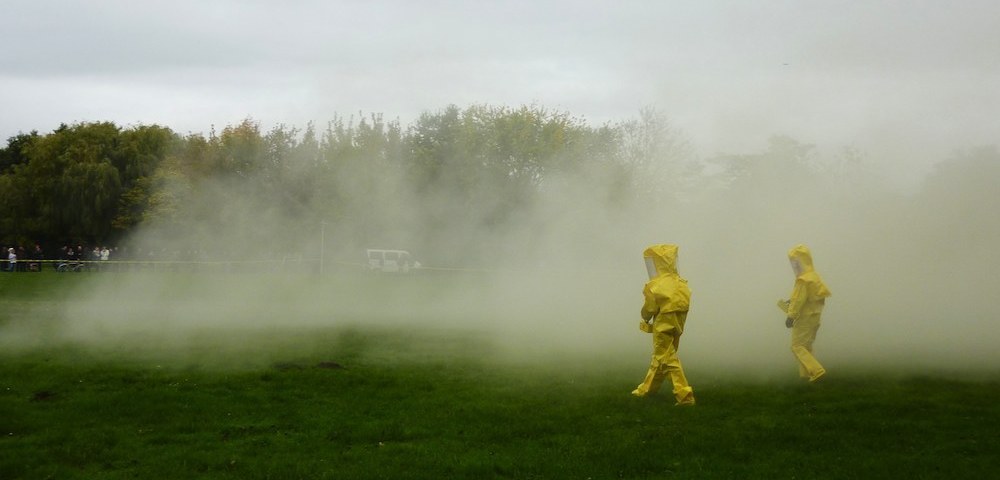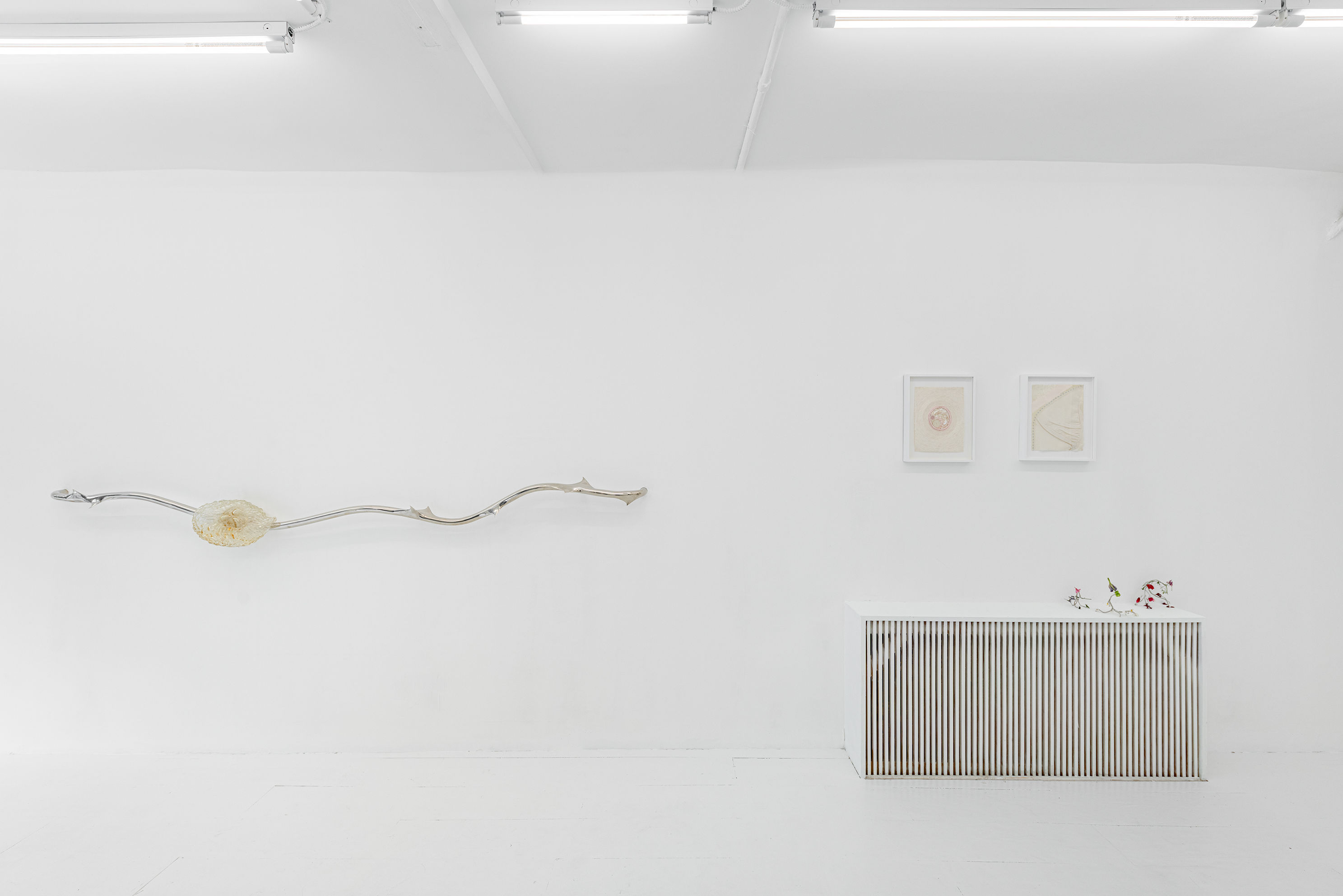Critical Art Ensemble Likes Helicopters, Hazmat Suits, and Beer

Consisting of five multivalent artists, thinkers, renegades, and rabble rousers, the Critical Art Ensemble works at the fiery intersection of technology, art, political activism, and critical theory. They hurl bombs at many of the things Western culture holds dear with a flair for the unpredictable and the provocative. In the case of their Portland art extravaganza, they’ll be tackling inequitable resources distribution and the acceptable forms of sacrifice in our society with an exhibition, talks, and a beer-fueled block party.
"Time after time, Critical Art Ensemble has surprised, delighted, and annoyed countless viewers, activists, and those who champion the status quo,” says the show's curator, Portland artist Mack McFarland. “From my first encounter with their work, the book Electronic Civil Disobedience & Other Unpopular Ideas, to my latest, the event A Public Misery Message: A Temporary Monument to Global Inequality, I too am surprised, delighted, and annoyed—and in that is CAE's power, and the reason to bring them to Portland. "
Public Misery Message, in Kassel, Germany, involved creating a building–sized bar graph that illustrated America’s wealth disparity. Each centimeter represented $100, which in the end required a helicopter to fly over 700 feet into the air to represent the top one percent. On the day of the show, a red carpet directed the 50 people who had bought tickets for a ride to the helicopter, while the 99 percent entered a raffle to win a free flight. Other works have used things like molecular biology to test for contaminations in the supposedly safe international food supply, leading participants through manipulating transgenic bacteria, and a multimedia event that critiqued America’s policy on HIV.
Formed in 1987, the ensemble has been at the forefront of the emerging bioart movement, in no small part due to the fact that the FBI charged one of the founders, Steve Kurtz, with bioterrorism in a highly publicized case. Of the prosecution, the New York Times wrote: “They have transformed Mr. Kurtz into an unlikely art world martyr-hero and shone a spotlight on an emerging art movement that blurs the lines between art and science—especially the science of genetics and biotechnology—and also the lines between art and activism.”
Although CAE has shown at the likes of the Whitney and New Museum in New York City, the group doesn’t differentiate between work in the street and in the gallery, and they’ll be in both in Portland. Here’s a rundown of the events:
Acceptable Losses
March 13–June 2
CAE will is creating a public exhibition at PNCA’s Feldman Gallery and Project Space designed to explore the range of human sacrifices that are acceptable—or not—in our society.
The ensemble will present on opening night, this Wednesday, at 6:30 with a reception following.
Critical Art Ensemble: A Conversation about Art & Politics
March 14 at 7pm, 5th Avenue Cinema
Presented by Portland State University and Lewis and Clark College, CAE will present an overview of their practice and the socio-economic issues they address in their work.
Keep Hope Alive Block Party
March 16, noon–5pm
While a small minority might possess most of the world’s wealth, CAE is throwing a block party to remind us that we still have enough to keep our heads up, including “sustenance (soup kitchen open all afternoon); delirium (forty-ounce bottles of Miller High Life for those of age, and Big Gulps of Mountain Dew for under-agers); and hope (raffle tickets offering big cash prizes, so that for a lucky few, economic mobility will not only be downward).”
Brian Holmes Lecture
March 15 at 6:30pm
Brian Holmes is a cultural critic as well as a member of the Technopolitics group and the Compass Group, which explores the “Midwest Radical Cultural Corridor.” Holmes’ talk will focus on the contributions of the Critical Art Ensemble and their unflinching theoretical confrontation with the global scale of “pancapitalism.”




